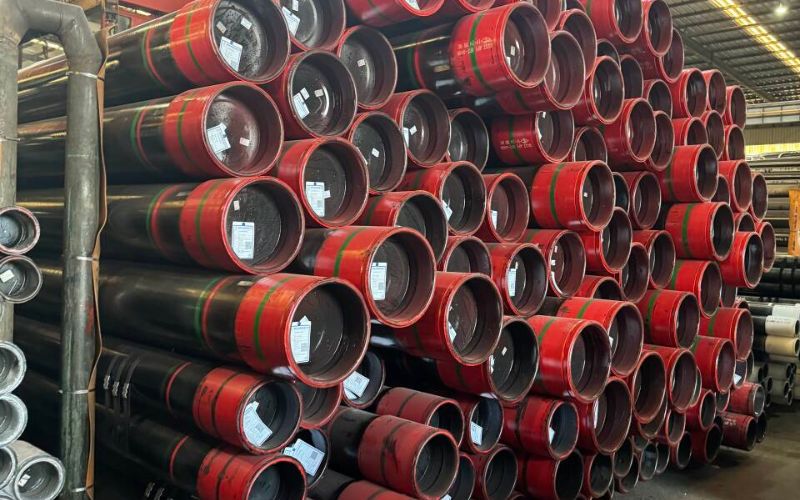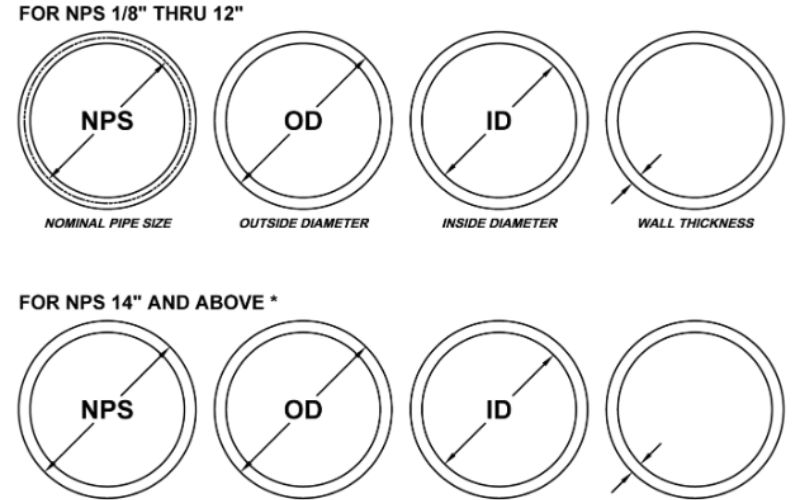The realm of metals is vast and has its dominantly huge sphere of act in various fields. It is a pity that few materials have been able to shape industries with modernity as deeply as non-ferrous metals. Non-ferrous metals, as named, are not only devoid of iron but are much sought for their peculiar properties that find lots of utility in a plethora of applications. From copper being highly conductive and powering the electrical systems to aluminum with designability and strength on doling out revolution in transportation, indeed, non-ferrous metals are working at the forefront of innovation in many sectors. Although this blog looks at the definition, key properties, and uses of non-ferrous metals, the post tries to highlight their importance in shaping technologies and infrastructures today and tomorrow. Whether you are an engineer, a designer, or just wondering about what really fancy material propels progress, this will give a bit of clarity and insight into the dazzling world of non-ferrous metals.
Introduction to Non-Ferrous Metals
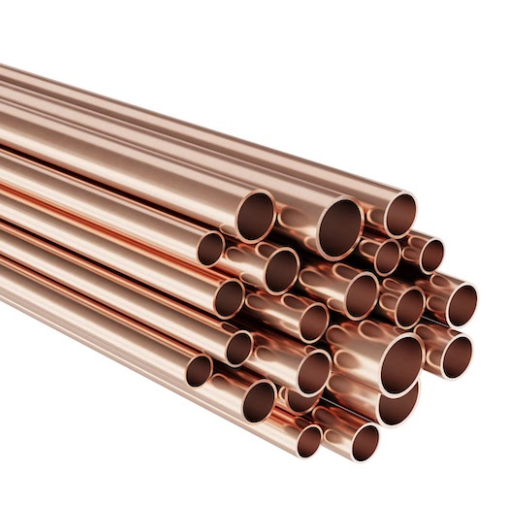
Non-ferrous metals are metals that do not contain a significant amount of iron and hence resist corrosion and are light when compared to ferrous metals. Aluminum, copper, lead, zinc, and titanium are the most common examples. Such metals are highly valued for their strength, conductivity, and versatility, which are necessary in industries such as construction, electronics, transportation, and aerospace. Their distinct characteristics pave the way for an unusual set of applications, from wiring to high-performance components in high-tech applications.
What are Non-Ferrous Metals?
Non-ferrous metals are essential for modern industrial use due to such special qualities to mention a few: specific gravity, conductivity, resistance to corrosion, and strength. Being non-ferrous metals, they lack any significant amount of iron and shall therefore be nonmagnetic, a necessary requirement for some applications.
Among non-ferrous metals, aluminum is well-known for its light weight and corrosion resistance. It is largely used for automobiles, aerospace, and construction. For example, aluminum constitutes about 27% of all non-ferrous metal use globally, indicating its particular application in building materials and transport.
Increasingly important with renewed emphasis on renewable energy projects, copper is prized for its outstanding electrical and thermal conductivity. Approximately 60% of global copper demand is driven by its use in electrical wiring and other components of infrastructure, renewable energy systems, and technology. Zinc, too, is prominent in protecting steel from corrosion by galvanizing it; thus, the zinc coatings greatly extend the life of steel structures. Annual global zinc consumption is estimated to be in excess of 13 million metric tons, with construction and manufacturing as the primary consumers.
Titanium, for instance, is extraordinarily strong for its weight and superbly resistant to corrosion, thus appropriate in aerospace, medical implants, and high-performance equipment. Even though there are regulatory restrictions, lead continues to be used in batteries, mostly in the automotive sector, accounting for over 85% of global lead consumption.
Such properties of non-ferrous metals endear them for sustainable technologies, including the making of electric vehicles, wind turbines, and solar panels. As such, non-ferrous metals like copper and aluminum help in the electric vehicle charging infrastructure and renewable energy grids to ensure efficiency and durability.
Working with the unique properties of non-ferrous metals, they shall therefore continue to innovate and sustain the traditional uses and perhaps the special applications of present technology.
Differences Between Ferrous and Non-Ferrous Metals
Ferrous metals contain iron, are magnetic, and prone to rust, while non-ferrous metals lack iron, are non-magnetic, and resist corrosion.
| Key Point | Ferrous Metals | Non-Ferrous Metals |
|---|---|---|
|
Iron Content |
Contains iron |
No significant iron |
|
Magnetism |
Magnetic |
Non-magnetic |
|
Corrosion |
Prone to rust |
Corrosion-resistant |
|
Density |
Denser and heavier |
Lighter |
|
Strength |
High tensile strength |
Malleable |
|
Uses |
Construction, tools |
Wiring, roofing |
|
Examples |
Steel, cast iron |
Copper, aluminum |
Importance of Non-Ferrous Metals in Manufacturing
Non-ferrous metals are urgently needed by the manufacturing industry because of certain distinct properties such as lightness, corrosion resistance, and efficient conductivity. These metals, which include aluminum, copper, lead, zinc, and titanium, are necessary for making automobiles, electronics, aerospace components, and renewable energy technologies.
The aluminum, in particular, is largely used to manufacture lightweight materials for the automotive and aircraft industries to aid in saving fuel by reducing the total mass. Based on the recent reports, from 2023 to 2030, global aluminum use in the automotive sector will increase at a CAGR of more than 6%. In the same way, copper, with its high conductivity, is widely used in manufacturing electrical wiring, semiconductors, and electric vehicles, with copper demand related to EVs projected to increase by nearly 40% by 2030.
A further role of non-ferrous metals is in renewable energy. According to the International Renewable Energy Agency (IRENA), zinc and copper metals play a key role in manufacturing wind turbines and solar panels for efficient energy generation and transmission. Titanium, meanwhile, is greatly used in aerospace manufacturing for the geothermal production of lightweight components, enjoying a superior strength-to-weight ratio and resistance to extreme temperatures.
Their usefulness stretches beyond production, as non-ferrous metals support sustainability goals-the recycling of many of these metals is well developed. As an example, nearly 75% of all aluminum ever produced worldwide has since been recycled and is in use today, showing how non-ferrous metals are vital in realizing a circular economy.
These high-performance materials continue to spur high-tech advancements across industries and are invaluable in actualizing innovations while solving current issues such as energy efficiency, emissions reduction, and sustainable manufacturing processes.
Unique Properties of Non-Ferrous Metals
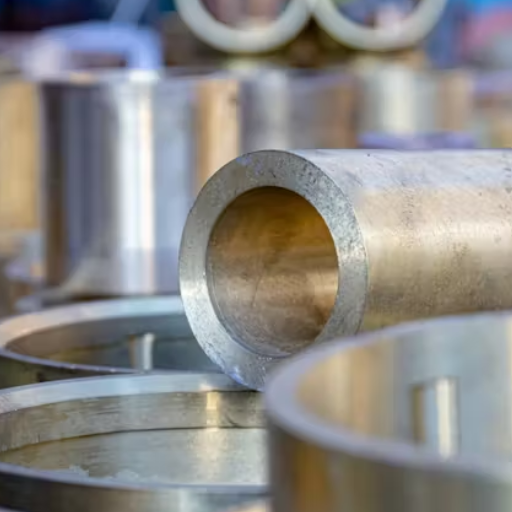
With a distinct set of properties, non-ferrous metals bring in numerous heavy benefits. For instance, they are usually lighter in weight, corrosion-resistant, and non-magnetic. This, combined with their thermal and electrical conductivities, makes them apt for carrying out transmission of energy and heat transfer. Aluminum, for example, and copper, while unifying with other non-ferrous metals in the category, stand notorious for their mallability-which simply means they’ll be easy to shape and work along in the manufacturing process. Recyclability adds to their worth, drawing resources into sustainable development and conservation.
Corrosion Resistance
The property of corrosion resistance is of utmost importance for non-ferrous metals, thus making them suitable in condition where application is so much prioritized for durability and longevity. Aluminum, copper, and titanium resist corrosion due to moisture, oxygen, and biotic factors. Aluminum, for instance, provides that oxide layer resistant to corrosion on exposure to air. Copper stands next to aluminum in its resistance to corrosion while withstanding harsh conditions of marine environment, which find applications in plumbing and electrical wiring.
As per the studies, aluminum alloys in neutral corrosive environments face negligible corrosion, often less than 0.02 mm/year, so they can be used for a longer time in construction and aerospace. Titanium, widely used in medical implants and aircraft, stands out for its corrosion resistance in saline and acidic solutions, a result of the strong oxide layer that is regenerated fast whenever it is damaged.
In corrosive conditions, their high reliability and longevity reduce maintenance costs and enhance a product life, yet another accent to their presence as reliable long-term solutions for innumerable industries.
Conductivity and Malleability
Non-ferrous metals are great conductors of electricity and very malleable; hence these two properties provide a situation for their applicability to be extremely wide. Materials like copper and aluminum are excellent conductors of both electricity and heat. Copper, having an electrical conductivity in the order of 59.6 × 10^6 S/m, is significantly used in power transmission and various electronics, while aluminum, being of lower density, is often the next best option for high-voltage cables and heat sinks.
The process of malleability gives a non-ferrous metal the ability to be worked into any shape without cracking. For instance, aluminum sheets find extensive applications in the automotive and aerospace industries due to their capability of being shaped into lightweight but sturdy parts. Gold, for example, is arguably the most malleable metal; it can be drawn into wire or beaten into thin sheets for applications in electronics and jewelry. Thus, in tandem, these properties demonstrate the capability of non-ferrous metals to serve as prime materials for technological developments and industrial applications.
Lightweight Characteristics
The lightness of non-ferrous metals makes them essential across numerous industries, serving well where weight reduction plays a crucial role. For instance, aluminum being 2.7 g/cm3 in density is approximately one-third as heavy as steel, thus being suitable for automotive and aerospace sectors, where topmost considerations are fuel efficiency and performance. Likewise, since titanium maintains a high heat-to-weight ratio with a density of about 4.5 g/cm3, it finds major applications in aerospace engineering and medical implants, where the requirement is durability in combination with lower weight.
Being the lightest structural metal, magnesium having a density of 1.74 g/cm3 finds applications in electronics and automotive sectors to develop light components without compromising strength. The advantage offered by such lightweight materials is the cost-saving capacity comprised of fuel savings and easy transportation, along with supporting sustainable practices that reduce carbon emissions. Such fantastic properties make non-ferrous metals of strategic value to Modern engineering and technology to enable innovations and advance in performance.
Common Non-Ferrous Metals
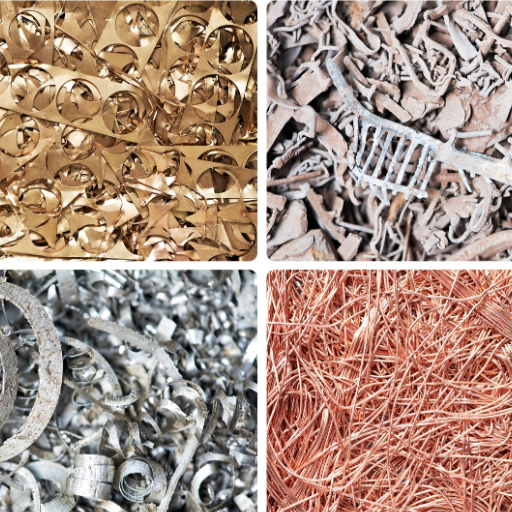
- Aluminum – Lightweight, durable, and resistant to corrosion, aluminum is widely used in construction, packaging, and transportation industries.
- Copper – Known for its excellent electrical and thermal conductivity, copper is essential in wiring, plumbing, and electronics.
- Zinc – Primarily used for galvanizing to protect steel from corrosion, zinc is also utilized in die-casting and alloy production.
- Lead – Despite its toxicity, lead is used in batteries, radiation shielding, and some industrial applications.
- Nickel – Valued for its strength and resistance to heat and corrosion, nickel is commonly used in stainless steel and high-temperature alloys.
- Tin – Often used as a coating material to prevent corrosion, tin is also found in electronics and soldering applications.
Copper: Uses and Advantages
Copper is widely used for electrical wiring, plumbing, industrial machinery, and clean energy technologies due to its excellent conductivity, durability, workability, antimicrobial properties, and recyclability.
| Key Point | Details |
|---|---|
|
Conductivity |
High electrical and thermal conductivity. |
|
Durability |
Resistant to corrosion and long-lasting. |
|
Workability |
Easily shaped and formed. |
|
Antimicrobial |
Inhibits bacteria and viruses. |
|
Recyclability |
100% recyclable without property loss. |
|
Electrical Use |
Wiring, transformers, and circuits. |
|
Plumbing |
Pipes and fixtures. |
|
Machinery |
Industrial and mechanical applications. |
|
Clean Energy |
Solar cells, EVs, and green tech. |
|
Aesthetic Use |
Architectural elements like roofing. |
Brass: Composition and Applications
An alloy is brass, with the amount of copper and zinc varying in order to produce a huge variety of brass types adapted for particular uses. Typically, brass has anywhere from 55 to 95% copper and 5 to 45% zinc, but small quantities of other elements may be added for enhancement, such as tin, aluminum, or lead, to improve corrosion resistance or strength or to enhance machinability.
A major advantage of brass involves the excellent corrosion resistance it has in water or salt-containing atmospheres. Hence, it stands to be commonly selected for marine plumbing and fixture purposes. Its malleability and machinability permit fabrication into complex components such as musical instruments, decorative objects. Thermally and electrically, brass offers average conductivity; thus, it is used for electrical terminal and heat exchanger purposes.
Brass finds wide application in construction, where architectural hardware like locks and hinges are formed from it; in manufacturing, wherein it goes into precision gears and fittings; and in technology, where it is utilized for electronic components owing to its non-magnetic properties. Brass remains favored for a major number of industries and can fulfill practical as well as the aesthetic requirements.
Stainless Steel: A Special Case of Non-Ferrous Alloys
In the category of valuable non-ferrous alloys, stainless steel occupies a special place because of its outstanding corrosion resistance capability, strength, and versatility. Stainless steel mainly contains iron, chromium, and other elements such as nickel, molybdenum, and manganese. The stainless nature is conferred through the formation of a thin, highly stable layer of oxide on the surface that shields the metal from rust and stains. Chromium is pivotal for corrosion resistance, in levels typically greater than 10.5%.
There are many types of stainless steels tailored toward specific environments. For instance, austenitic stainless steels contain high levels of chromium and nickel; hence, they offer excellent strength and ductility and resist corrosion in a wide variety of environments. They are considered indispensable in food processing, medical devices, and construction industries. On the other hand, ferritic stainless steels are magnetic and resist stress corrosion but offer fewer malleability characteristics, making them best for automotive exhaust systems and industrial equipment. Duplex stainless steels combine the features of austenitic and ferritic stainless steels, delivering high strength and excellent corrosion resistance, particularly in aggressive environments such as those of chemical processing plants or offshore infrastructure.
Record-breaking stainless steel production of over 59 million metric tons per annum in the recent past continues to bear witness to the very much alive status of this industry globally. The growth is propelled by the demand created by modern technologies and sustainability initiatives. An outstanding feature of stainless steel is recyclability; it can be recycled 100% without a loss in quality, therefore promoting the circular economy.
Stainless steel, everywhere from kitchen cookware to critical infrastructure, is not just a material but itself is a force driving innovation and resiliency through various industries. Advances in alloying and surface technology will continue to enhance the scope of its applications and keep it relevant in this changing world.
Applications Across Various Industries
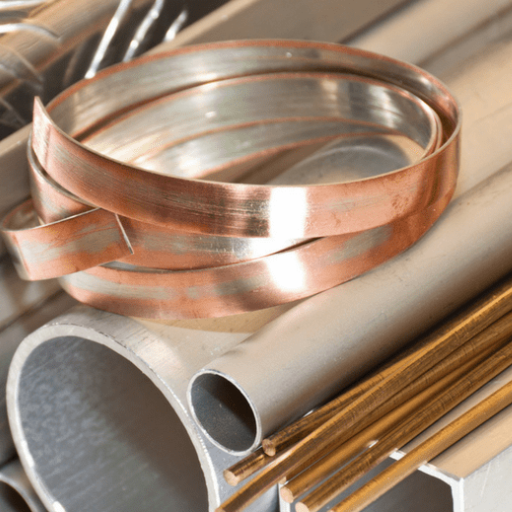
Stainless steel is used extensively across many industries mainly for its strength, corrosion resistance, and versatility.
- Construction: Stainless steel is often structural framework, roofing, and cladding materials, providing strength and longevity to buildings with low maintenance requirements.
- Automotive and Transportation: Exhaust systems, trim, and structural elements use stainless steel because it is lightweight and corrosion-resistant.
- Medical and Healthcare: Instruments, implants, and hospital equipment necessitate high-grade steel for health and biocompatibility reasons.
- Food and Beverage: Kitchenware, storage tanks, and food manufacturing equipment use stainless steel for safety and cleanliness considerations.
- Energy and Environmental: From renewable energy projects to water treatment plants, stainless steel finds applications in sustainable and durable constructions.
It is this very versatility that lends itself as a solid backbone for innovation in all these fields.
Aerospace and Automotive Industries
Due to stainless steel’s very high strength, corrosion resistance, and temperature resistance, it finds especially critical applications in aerospace and automotive industries. Aerospace applications for stainless steel include primary structural components under aircraft frames, aircraft engines, and landing gears where wear and tear and maintenance needed to be in the realms of durability and high reliability. Recent improvements are weight-reducing stainless steel alloys that provide better structural integrity for more fuel-efficient aircraft. For instance, stainless steel is used in modern jet engine designs that have to endure temperatures in excess of 1800°F (982°C).
Here again, stainless steel has found itself becoming a part of the automotive industry, mainly in exhaust systems, fuel tanks, and structural components. Insuring long life and less outlay of money on maintenance, it consists of an economical material for manufacturers. By 2025, the automotive sector will witness a spurt in demand for stainless steel on account of electric and hybrid vehicles. Stainless steel in battery housings and their associated charging infrastructures is yet another track reinforcing the role such materials play in taking energy-efficient transport forward. These highlight the fact that the material can grow to meet ever-changing working needs in both industries, fostering safety, innovation, and sustainability.
Electrical and Electronics Applications
For its durability, corrosion resistance, and very high conductivity, stainless steel has become increasingly important in the electrical and electronics industries. It is employed extensively in precision manufacturing of components, including connectors, sensors, and microelectronic devices. Furthermore, stainless steel may be used in components that impart conductive properties to circuit boards, thereby requiring reliability and efficiency in the electrical properties.
With the fast development of smart technologies and renewable energy systems, stainless steel in power distribution systems, including switchgear and transformers, especially, has seen significant growth in application. Stainless-steel enclosures, for instance, are used to protect sensitive electronic equipment from environmental impacts such as moisture, heat, and physical insults.
According to recently published industry figures, the global electrical steel market was valued at nearly USD 20 billion in 2022 and is projected to grow with a CAGR of more than 6% by 2030. This extraordinary rise owes its existence to the widespread use of stainless steel in energy-efficient solutions, from the charging stations for electric vehicles to wind turbines and solar power infrastructure. These trends not only highlight the stainless steel’s versatility in terms of meeting modern technological challenges but also in fostering sustainable development.
Construction and Infrastructure
With the construction infrastructure industries serving as a backbone for stainless steel demand, stainless steel-rending construction projects resplendently stand as marvels that can weather elements of environment and time. It is used in bridges, skyscrapers, airports, high-speed railways, and many other constructions requiring stainless steel for their structural durability and low maintenance.
Moreover, stainless steel directly promotes sustainable construction. Industry records assert that due to the high recyclability of the material—about 88% of stainless steel can be recycled—less construction debris gets dumped into the landfills, thereby reducing environmental impact from large construction projects. By contrast, the construction industry is forecasted to reach USD 14.4 trillion by 2030, with investments steadily growing in smart cities and green buildings, and this corroborates the role of stainless steel in supporting innovation and sustainability in urban development.
Another trending avenue is the increasing usage of stainless steel for water and wastewater infrastructure development. The infrastructure is resistant to chemical corrosion from the environment and hence makes ideal stainless steel systems for piping, treatment plants, and storage tanks that promise long-term performance in aggressive environments. Such applications provide water management systems with efficiency while addressing regional issues related to water scarcity and infrastructure modernizations.
Environmental Impact of Non-Ferrous Metal Usage
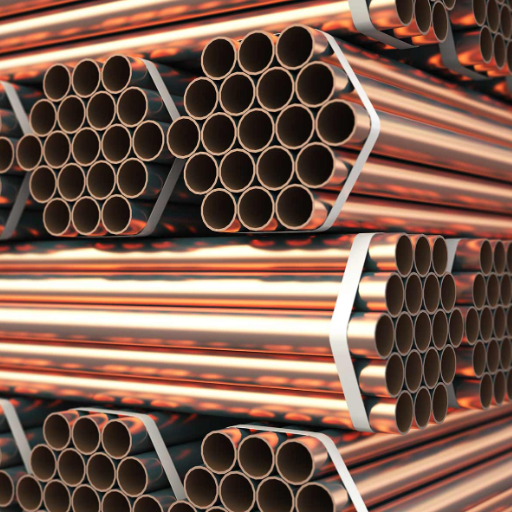
Non-ferrous metals do have both protective and adverse effects on the environment. On the upside, they are metals like aluminum, copper, and zinc, which are highly recyclable, so that their continuation in mining is limited and unnecessary, hence the generation of very little waste. These non-ferrous metals join in the reduction of carbon emissions since their recycling demands much less energy than forming them from raw ore. However, the harmful few include habitat destruction, pollution of soil and water, and operations that require a lot of energy, mainly sourced from greenhouse gases. Addressing these environmental concerns requires responsible sourcing, efficient recycling practices, and the adoption of cleaner production technologies.
Resource Extraction and Sustainability
Technological advancements have started reshaping how natural resources are extracted, with an aim of minimizing the environmental demerits and maximizing efficiency. For instance, the development of AI and machine learning has enhanced the accuracy in mapping mine sites, thus optimizing unproductive excavation and protecting ecosystems. The adoption of automated forms of machinery and electric mining machines is also increasingly becoming common, considerably curbing greenhouse gas emissions vis-à-vis conventional fossil-fuel-driven operations.
Water conservation during resource extraction has gained momentum. Mining operations benefit from newer approaches in water recycling systems that often reduce the fresh water needs by up to 70%, thus relieving pressure from local water resources. Also, bioleaching, which is an environment-friendly alternative involving the use of microorganisms to extract metals from ores, is gaining acceptance against traditional processing methods, which often rely on harsh chemicals.
The global market for green mining technologies is forecasted by recent industry reports to grow at a CAGR of nearly 7% over the next ten years, demonstrating a growing focus on sustainability. These technological advances represent a crucial balance between providing for the material needs of a population and ensuring environmental preservation for future generations.
Impact of Non-Ferrous Scrap Metal Recycling
Recycling of non-ferrous scrap metals like aluminum, copper, and nickel offers tremendous economic and ecological benefits. From the economic standpoint, it diminishes the pulling out of raw materials, which is usually considered an expensive and very resource-intensive process. One example is that recycling aluminum saves up to 95% energy in producing a similar material from bauxite ore. The global aluminum recycling industry was valued at more than $55 billion in 2022 and is expected to maintain steady growth due to increasing demand for sustainable industrial practices.
On an environmental front, recycling non-ferrous metals reduces carbon emissions and pollution. For example, less than 15% of the energy is employed to produce recycled copper, against mining, and refining of new copper. Use of recycled materials will also considerably cut down disposal into landfills and hence the natural habitat that otherwise would have been extinct had a mining operation been undertaken there. It is estimated that recycling one ton of aluminum scrap saves about 14,000 kWh of energy and prevents the emission of around 10 tons of CO2.
Additionally, recycling gradually creates jobs and hence promotes the development of sorting and reprocessing techniques and technologies within the local economy. With circular economies becoming globally significant, the recycling of non-ferrous scrap metals remains at the core of sustainable industry and environmental development.
Reducing Carbon Footprint through Recycling
Recycling and reducing my carbon footprint are very tangible measures I can take to promote sustainability. I make it a point to separate and dispose of recyclable items such as paper, plastics, and metals, ergo keeping more refuse from the landfills. On the other, it lessens the pressure of loosening and mining. On that path, recycling uses energy, lessening greenhouse effect emissions; thus, it helps the environment. Hence, it brings my everyday life in sync with the global fight against climate change.
Advancements in Technology Enhancing Non-Ferrous Metal Utility
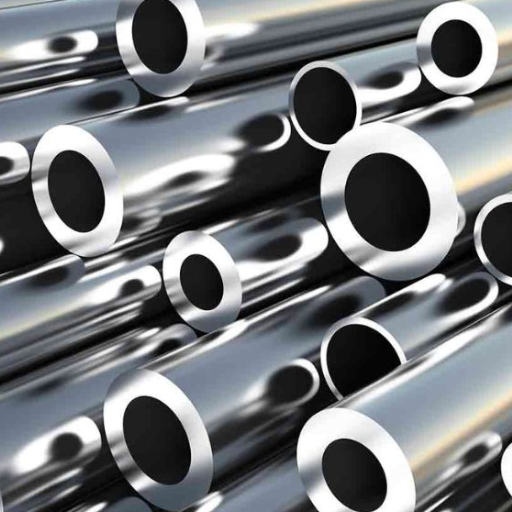
Advancements in technology enhancing non-ferrous metal utility include automation, AI, green technologies, energy-efficient smelting, and advanced recycling methods.
| Key Point | Details |
|---|---|
|
Automation |
Streamline processes |
|
AI |
Optimize production |
|
Green Tech |
Reduce emissions |
|
Efficient Smelt |
Save energy |
|
Recycling |
Enhance purity |
Innovations in Alloy Development
The field of alloy development has seen tremendous strides over the recent years with the emergence of cutting-edge technologies and the quest for materials that would be more efficient, durable, and sustainable. These modern opportunities have found applications in aerospace, automotive, and construction industries, where the need for lightweight materials that exhibit high strength continues to grow.
One of the two significant pushes in alloy design is the creation of high-entropy alloys (HEAs) that comprise five or more principal elements in near-equal proportions. HEAs are characterized by unusual mechanical properties, such as strength, toughness, and corrosion resistance, that suit being used in extremes of environments. For instance, such HEAs are identified with strength and ductility at ultra-low temperature, an essential characteristic for aerospace applications.
The aluminum-scandium alloys are now receiving more attention, particularly in automotive and aerospace fields. Aluminum-scandium alloys enhance strength without the penalty of weight, thereby assisting in fuel efficiency and carbon footprint reduction. It has been found through various studies that small additions of scandium increase the yield strength of aluminum alloys by 50% at least, thus opening up considerable potential for reducing the volume of material consumed while improving performance.
The composition and microstructure of alloys are finely controlled through recent developments in additive manufacturing or more popularly referred to as 3D printing to allow the production of materials custom-tailored for certain applications. Titanium alloys by means of additive manufacturing are now used practically for the production of medical implants and aerospace components because they are light yet very strong.
The recycling procedures for non-ferrous metals such as copper, aluminum, and magnesium will also benefit from these technological advances. More sophisticated methods, such as laser-induced breakdown spectroscopy (LIBS) and X-ray fluorescence (XRF), are improving sorting technologies to provide inexpensive ways to reuse and reformulate alloys without compromising on quality.
Rapid research and development in alloy science provide for the unlocking of limitless potential that serves global industries in tandem with critical challenges of sustainability and resource efficiency. This rapid dynamism in the field indicates that there has to be continuous innovation for the evolving demands in today’s technological world.
Recycling Technologies and Processes
Recycling technologies have undergone various changes, allowing for the collection and reuse of materials for multiple purposes. Among these processes, mechanical recycling, which generally includes processes like shredding, sorting, and melting materials, is truly the most important in recycling of plastics, metals, and glass. The advent of automated sorting technologies, with systems based on AI and optical sensors able to separate different materials at high speed and refined accuracy, has drastically limited contamination and ensured a high grade of output.
Then, chemical recycling is again considered a modernist approach to recycling. This process breaks down polymers into their chemical building blocks to remake them into high-quality materials that never degrade over time. For instance, plastic wastes are pyrolysed into fuel or feedstock, which is considered one of the solutions of non-recyclable plastics.
E-waste recycling further evokes great momentum with the concomitant-rising challenge of electronic wastes. Some techniques are hydrometallurgy and bioleaching to win precious metals such as gold, silver, and palladium from wastes with the least environmental harm. Eco-friendly recycler interventions will continue to reduce miners’ ability to use raw materials and almost optimize top value from the waste streams.
With this, the industry is expected to cross the $275 billion mark in 2027, according to an international market report. The advancement of technology and checking of demand for sustainable practices pushed it forth. To give another illustration of the immense environmental benefits, this innovative process saves nearly 95% of the energy required to produce aluminum from ore when recycling aluminum from scrap. These technologies pave their path toward resource efficiency, with an all-encompassing role in the future of sustainable development worldwide.
Future Trends in Non-Ferrous Metals
The non-ferrous metals industry is neck-fast into rapid innovations and transformations precipitated in the coming years by the confluence of technological development, climate goals, and shifting market demands. Increasing however the green trend by way of adoption of green technologies with the key development in low-carbon aluminum production processes that can substantially cut greenhouse gas emissions. Say recent innovations in smelting, involving in some way inert anode technology, might reduce CO2 emissions from aluminum production by up to 85 percent.
Another trend is that non-ferrous metals have been playing a crucial role in renewable energy and battery storage solutions. Here, lithium, nickel, and cobalt are major materials for the construction of batteries for electric vehicles. A forecast by 2030 showing global electric vehicle sales to account for 40% of total automotive sales by then has created a surge for the demand for these metals. This demand has equally surged the levels of investment into sustainable mining and recycling technologies to conserve resources and the environment.
AI and machine learning applications in extraction, refining processes, and supply chain management are providing another set of technological impetus for the efficiency/profitability improvement. AI models can enhance energy efficiency, predict equipment maintenance needs, and suggest ways to improve product quality; hence the industry becomes more resistant and cost-effective. Blockchain is meanwhile being used to build transparent, and traceable supply chains, thus fostering trust and ensuring ethical sourcing.
The industry emphasis on circular economy principles by far is gaining even more momentum. Recycling rates for non-ferrous metals like aluminum, copper, and zinc are on the rise, pushed by regulations and consumer awareness. For example, the global recycled aluminum market is projected to grow at nearly 7% CAGR between 2023 and 2030; this trend underscores the significance of secondary production as a means toward sustainability.
Nevertheless, presently and beyond, the future for these non-ferrous metals will largely be established within an innovative, sustainable, and adaptable frame as demanded by a world that since welcomes high-tech and green nurturing. This will possibly give lead to the sector being in the spotlight as a major facilitator toward a global endeavor to a sustainable future.
Reference Sources
- Search method for optimal interpolation of thermomechanical coefficients for non-ferrous metals and high-alloy steels (Yashmetov & Kazakovtsev, 2025)
- This study explores the optimization of interpolation techniques for thermomechanical coefficients in non-ferrous metals and high-alloy steels. These coefficients, including the temperature coefficient (Kt), deformation degree coefficient (Kε), and deformation rate coefficient (Ku), play a crucial role in characterizing the deformation resistance of materials under varying conditions.
- The researchers propose the development of smooth interpolation functions using the least squares method to address the non-linear nature of these coefficients and their current representation in graphs and tables, which hinders their integration into automated control and optimization systems.
- The aim is to identify the most precise interpolation approach for a wide range of non-ferrous metals and high-alloy steels, facilitating more accurate mathematical modeling of their thermomechanical properties.
- A Comprehensive Review of Friction Stir Additive Manufacturing (FSAM) of Non-Ferrous Alloys (Hassan et al., 2023)
- This review article focuses on the emerging field of Friction Stir Additive Manufacturing (FSAM), a subset of solid-state additive manufacturing that produces multi-layered components through plate addition using the friction stir welding (FSW) concept.
- The study highlights the working principle and previous research conducted by various research groups using FSAM as a material synthesizing technique for non-ferrous alloys.
- The summary of affecting process parameters and defects, as well as the mechanical and microstructural properties of the produced components, are discussed in detail based on experimental data.
- The review also discusses the viability and potential applications of FSAM, as well as its current academic research status and future recommendations.
- Research into the Application of Additive Technologies in the Development of Tools for Microdeformation of Sheet Blanks Made from Non-Ferrous Metals and Alloys (Petrov & Tran, 2024)
- This study focuses on the manufacturing of stamping tools for microforming operations using different additive manufacturing technologies, from various materials (polymers and metals).
- A non-contact 3D scanning system was used to obtain metrological information on the accuracy of individual parts and assemblies/sub-assemblies.
- The researchers found that to match the dimensions of prototypes with the drawing dimensions and fall within the tolerance field, it is necessary to design the initial 3D model taking into account the peculiarities of the 3D printing technology, mechanical processing, and the performance characteristics of the tool.
Frequently Asked Questions (FAQs)
What are non-ferrous metals and their unique properties?
Non-ferrous metals are those that do not contain significant amounts of iron. They are known for their desirable properties such as resistance to corrosion, lower density, and excellent conductivity. Common examples of non-ferrous metals include aluminum, copper, lead, nickel, and zinc.
What is the difference between ferrous and non-ferrous metals?
The primary difference between ferrous and non-ferrous metals lies in their iron content. Ferrous metals contain iron and are typically magnetic, while non-ferrous metals do not contain iron and are generally non-magnetic. This distinction affects their physical properties and applications.
What are the types of non-ferrous metals?
Types of non-ferrous metals include aluminum, copper, lead, nickel, titanium, and zinc. Each type has its own unique properties and applications, making them valuable in various industries, such as construction, electronics, and manufacturing.
How does recycling impact non-ferrous metals?
Recycling non-ferrous metals is beneficial as it conserves natural resources, reduces energy consumption, and minimizes environmental impact. Non-ferrous scrap metals are highly valued in the recycling industry due to their ability to be reused without losing quality.
What are common non-ferrous metals used in everyday applications?
Common non-ferrous metals include aluminum, copper, brass, and lead. These metals are used in a variety of applications, from electrical wiring and piping to automotive components and packaging materials.
What are the properties of non-ferrous metals?
Non-ferrous metals typically exhibit properties such as high resistance to corrosion, good electrical conductivity, and lower weight compared to ferrous metals. They are also more malleable and ductile, making them easier to shape and work with in various applications.
What is the significance of alloys in non-ferrous metals?
Alloys of non-ferrous metals, like brass (an alloy of copper and zinc) and bronze (an alloy of copper and tin), enhance the properties of the base metals. These alloys are engineered to improve strength, corrosion resistance, and other characteristics, making them suitable for specialized applications.
How are non-ferrous metals more expensive than ferrous metals?
Non-ferrous metals tend to be more expensive than ferrous metals due to their rarity, the complexity of extraction, and the demand for their unique properties. Precious metals like gold and silver are particularly costly due to their limited availability and high market value.
What are some examples of non-ferrous scrap metals?
Examples of non-ferrous scrap metals include aluminum cans, copper wiring, and lead batteries. These materials are commonly collected for recycling and can be processed to create new products, thus contributing to sustainability efforts.



